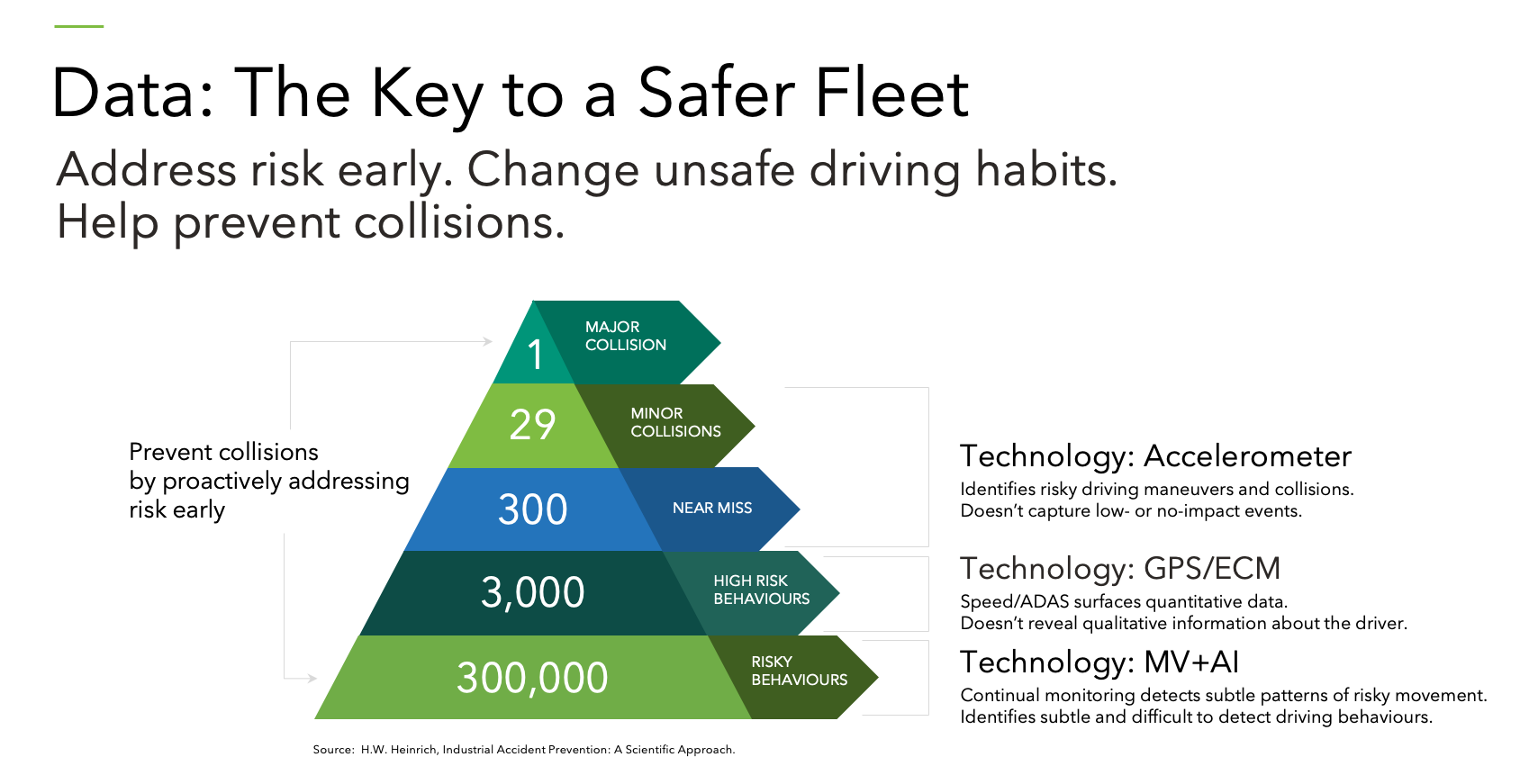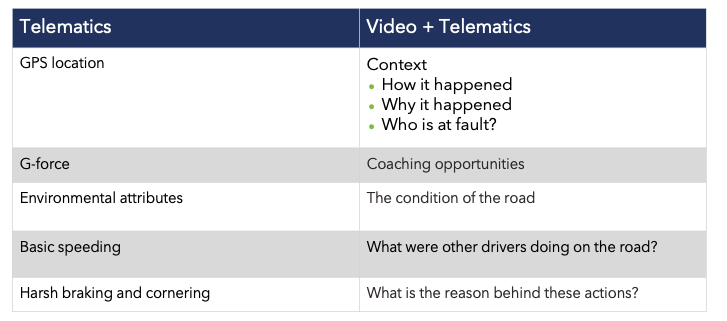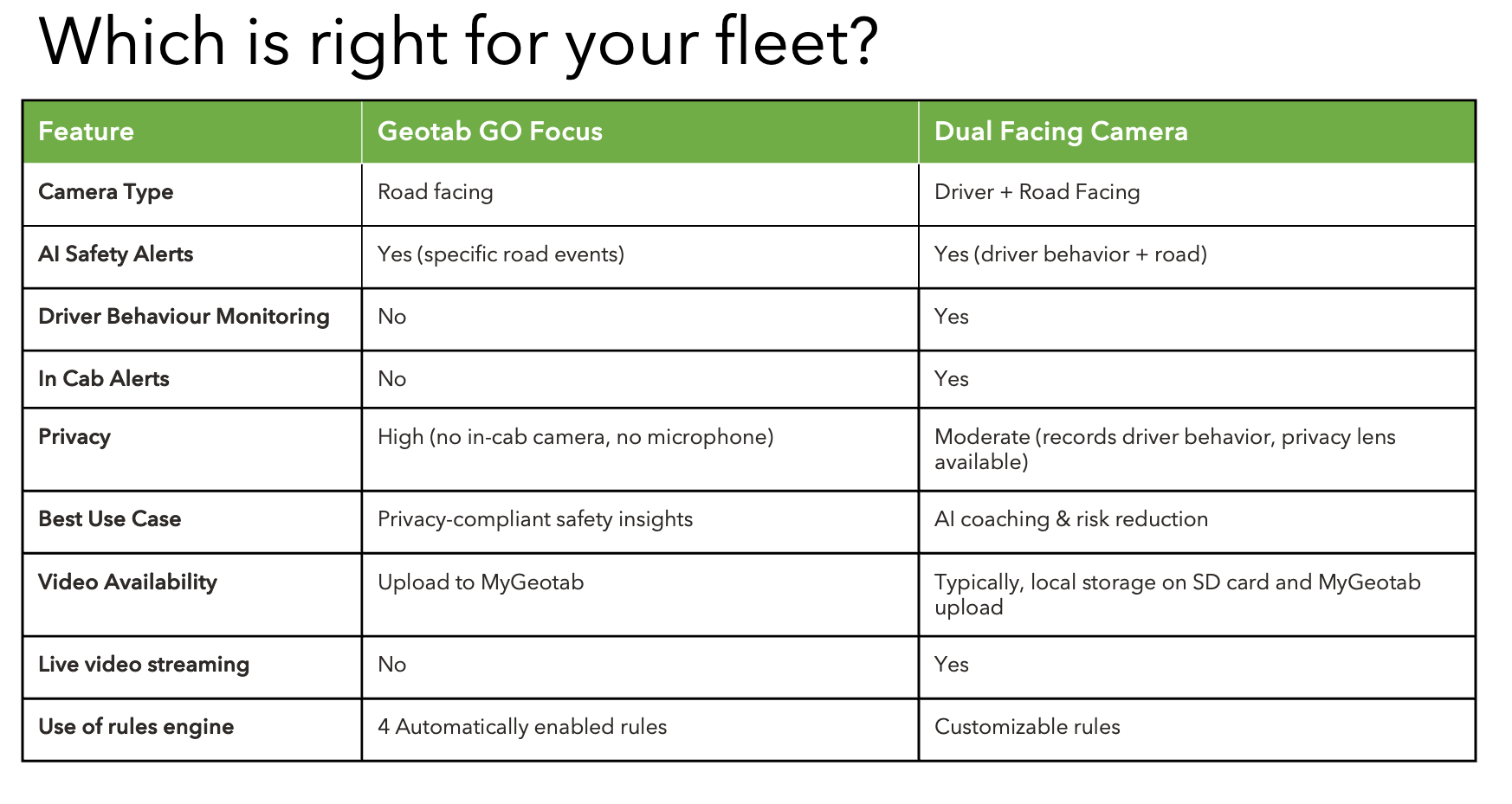Webinar Recap, Safety 101: Fleet Driver Safety – Protect Your Business, Empower Your Drivers
Featuring industry safety experts:
Christina Hartzler, National Client Partnership Manager – Mike Albert Fleet Solutions Jamie Lox, Senior Marketing Manager – Geotab
Watch the full session here.
The current state of driver safety.
There’s no getting around it: Driving can be risky business. On average, there are nine traffic-related fatalities in the U.S. every day. More than 360,000 people are injured by distracted drivers annually.
Beyond the immeasurable human cost, a single fleet accident can incur financial damages in the hundreds of thousands of dollars, with extreme cases reaching the millions. Those dollars eat into a company’s profits, if not damage it irreparably.
But here’s the rub: A staggering 87% of accidents are attributed to driver behaviors such as not maintaining an adequate following distance and distractions like eating or changing the radio. Such behaviors are prime targets for intervention and improvement.
The good news is that safety programs work. They reduce accidents, lower insurance and repair costs, and help retain drivers. Keep in mind that drivers who stay with their employer are nearly 75% less likely to be involved in a collision.
The three key elements of fleet safety.
Helping fleets become safer and reduce collisions begins with collecting data—the right data. For instance, you may think that seat belt usage—which is critical—would predict collision risk, but it doesn’t. However, other behaviors, such as close tailing and harsh braking, do. The right data sheds light on three key factors:
Is the behavior safe? What risky behaviors are your drivers engaging in? How can they best be coached to reduce these incidents?
Is the vehicle safe? Are there maintenance issues, like faulty brakes, that increase risk? How can maintenance programs be modified to be more proactive and predictive?
Is the environment safe? How might weather, road conditions, and traffic patterns influence risk? How can drivers best be equipped to avoid or manage these situations?
Fleet safety insights: Key considerations for fleets.
Here are five critical aspects of fleet safety data:
Simplified Analytics Drive Better Decisions: Data can easily become overwhelming. That’s why fleet managers need and appreciate easy-to-understand dashboards (e.g., driver scores) that integrate the vehicle, driver, and environmental risks noted above.
Segmented Insights Ensure Fairness: Fleet managers need specific, actionable reports to be effective. Segmented insights ensure fairness and unbiased judgment by accounting for varying risks associated with different driving environments (e.g., urban vs. highway), vehicle types (e.g., heavy-duty truck vs. compact SUV), and traffic patterns (e.g., rural vs. central business districts).
Data-Driven Feedback Empowers Drivers: Objective, data-backed feedback helps drivers to adjust behaviors and improve safety. Data removes subjectivity from evaluation.
Context Always Matters: At first glance, two drivers may appear to have similar data regarding, say, miles driven and harsh acceleration and braking. However, when you examine the context, you may see that they aren’t identical and that the drivers must be coached differently.
Benchmarking Drives Continuous Improvement: Data begs to be compared. It’s how insights are formed. That’s why safety-minded fleets measure and compare performance within their fleet, across similar fleets, and against the same driver’s history.
Identifying risky behaviors.

The "Heinrich's Triangle" theory underscores the importance of addressing risky behaviors at the foundational level. The concept is simple yet powerful: By reducing the number of risky behaviors, you can expect a reduction in major collisions.
Technology comes to the rescue here. Most notably, machine vision (MV) and artificial intelligence (AI) provide continual monitoring that detects the subtle patterns of risky movements—precisely what you need to implement Heinrich’s Triangle.
The future of safety is proactive.
The fleet industry has historically relied on reactive measures, analyzing past incidents. However, the future of safer driving lies in proactive approaches, using AI models, MV, and GPS data to predict and prevent collisions.
Reactive vs Proactive Safety Monitoring
Reactive
- Incidents are investigated post-event with limited data
- Limited data or insights from past events to anticipate and mitigate future risks
- Driver coaching is focused on corrective action and negative reinforcement
- Management focused
Example: Scoring Systems Arbitrary and inaccurate scoring systems that are less rooted in understanding collision outcomes.
Proactive
- Determine problem areas before they happen using comprehensive fleet data
- Predictive reporting on factors affecting driver safety, such as difficult docking areas at customer sites, high rollover areas and riskiest drivers
- Uses real-time alerts to help drivers identify and correct risky driving
- Driver focused
Example: Predictive Modeling Make predictions based on past and current behavior to proactively identify real issues, improving driver and roadway safety.
The power of video monitoring for accident reduction.
While basic telematics data is a good start, adding video significantly enhances context, allowing for real-time notifications and targeted coaching opportunities. Video provides crucial details, such as who was at fault in an incident or what environmental factors, like rain or sun glare, may have played a role. This detail empowers drivers to self-correct in real time, improving their morale and retention by ensuring fairness and protecting them from unjust penalties.

Choosing the right video technology for your fleet.
There are many video hardware options to meet diverse fleet needs and privacy concerns. For example, the "GO Focus" is a road-facing camera ideal for privacy-focused fleets or those with union restrictions. It primarily focuses on critical safety events like tailgating and driver-initiated events. Something like the "Lytx AI 12" offers dual road-facing and in-cab video, real-time alerts, AI coaching, and live video capabilities for more advanced needs.
Choosing the right camera depends on fleet operations, privacy concerns, and monitoring needs.


Editor’s Note: Part two of this webinar series features a live safety tech demo. You can view the video here.
Get buy-in from your organization.
There are five proven strategies to securing buy-in from your organization:
- Lead with transparency. Explain your reasoning for implementing a safety program. Allow people to ask all the questions they have.
- Educate how the technology works. Conduct a thorough onboarding process and explain that video telematics is there for driver protection and safety, not to watch them.
- Identify internal champions. Identify drivers that are well-known across your organization to be early adopters. Then, enable them to share their positive experiences with more reluctant drivers.
- Demonstrate value with video evidence. Showing the benefits of a dashcam is far more convincing than telling. If you have footage of a near-miss or not-at-fault collision, share it with your drivers to demonstrate how technology can help prevent an accident and protect a driver.
- Recognize and reward. Regularly share footage of excellent driving to celebrate safe driving. Consider gamifying safety scores and rewarding drivers with gift cards and other incentives.
Getting beyond “Big Brother.”
Many drivers initially resist safety tech, thinking it is too “Big Brother.” However, in addition to the above, there are other steps fleets can take to win over reluctant drivers: Reinforcing privacy protections. Educate drivers about how the data and video are collected and safely stored and how it’s not broadcast throughout the company. Instead, it’s treated as sensitive data available only to those on a need-to-know basis. Sharing driver testimonials. This video from Lytx can go a long way toward reassuring drivers that telematics and video are their friends, not foes.
Your partners in fleet safety excellence.
Safety—there’s nothing more important. Protecting your drivers, vehicles, and business as best as possible requires data and technology. Ready to get started? Contact Mike Albert to identify the best safety-enhancing solutions for your fleet. With our telematics and video partner, Geotab, we will help ensure you’ve never felt better about safety.
Skills covered in the class
Fleet Safety
Operational Efficiency
Data-Driven Decision Making
Driver Retention
Did you enjoy this class?
Share it with your organization and colleagues.



